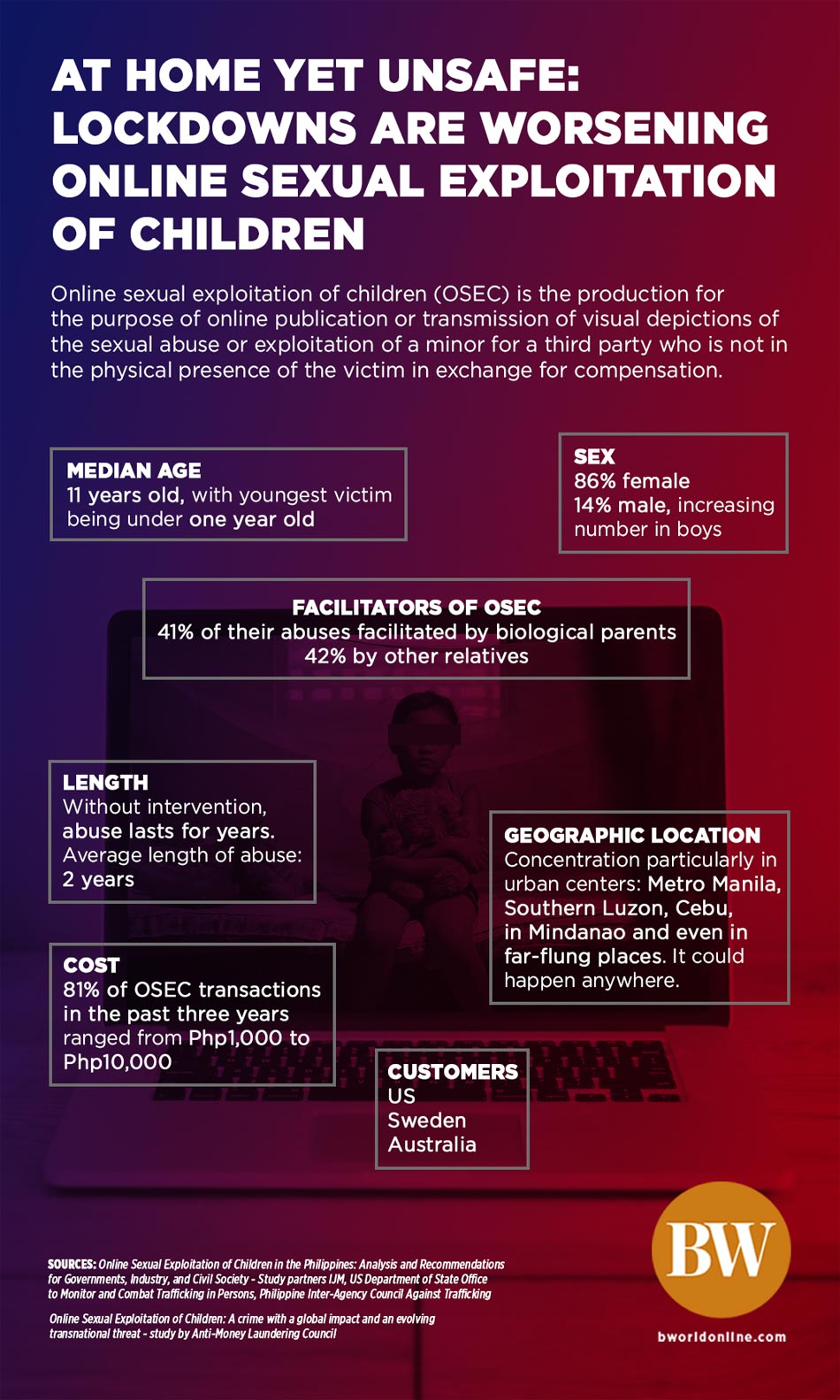Follow us on Spotify BusinessWorld B-Side
Online sexual exploitation of children (OSEC) is a crime that often happens at home at the hands of family, the very people who are trusted the most by the victims of this horrible crime.
This episode jumps off from a report from the Anti-Money Laundering Council on the surge of online child pornography transactions during the lockdown. Reynaldo Bicol, Manila field office director of the International Justice Mission, tells BusinessWorld reporter Luz Wendy T. Noble why the Philippines is a global hotspot for this crime, how the pandemic is making it worse, and what we can do about it.
 TAKEAWAYS
TAKEAWAYS
The Philippines is an OSEC hotspot for three reasons: English language proficiency; widespread Internet access and cheap gadgets; and a robust money remittance infrastructure.
English proficiency, which has long made the Philippines the darling of the Business Outsource Processing (BPO) sector, also makes it easier for traffickers to communicate with customers from Western countries.
Internet penetration in the Philippines, as of January 2020, is at 67%, with Filipinos topping the ranking for Internet and social media use. According to an IJM report, most traffickers communicated and exchanged materials with customers on the Surface Web or searchable web (as opposed to the Dark Web).
Finally, a robust remittance infrastructure—birthed by the Philippine economy’s reliance on overseas Filipino workers—also facilitates transactions with offenders, who are, as mentioned, from Western countries.
While there are laws in place, the government needs to further invest in its capacity to attend to the needs of the children.
“What is needed really is the implementation of these laws,” said Mr. Bicol, of the already existing laws that protect children from OSEC: there’s Republic Act No. 9208, or the Anti–Trafficking Persons Act; Republic Act No. 9775, or the Anti–Child Pornography Act; and Republic Act No. 10175, or the Cybercrime Prevention Act of 2005.
There is a big gap in the aftercare services for survivors of OSEC.
Each survivor has his/her own unique story of abuse of exploitation which has given them massive trauma. Recovery is mapped out according to individualized intervention plans—there’s no uniform timeline or exact formula to restore them.
Where we can improve: finding safe placement facilities and families willing to take care of victims through a foster care system; enrolling victims into comprehensive mental healing programs that will help them with their trauma; and helping these children gain life skills to prepare them for their eventual reintegration into the community.
“As the saying goes, it takes a community to protect a child,” said Mr. Bicol.
Recorded remotely on October 2. Produced by Nina M. Diaz, Paolo L. Lopez, and Sam L. Marcelo.
Follow us on Spotify BusinessWorld B-Side


![[B-SIDE Podcast] The sweet rewards of cacao farming in the Philippines](https://www.bworldonline.com/wp-content/uploads/2024/01/2024-01-22-B-side-Joseph-Podcast-ART-238x178.jpg)
![[B-SIDE Podcast] Philippines, Taiwan, and the uncertain future](https://www.bworldonline.com/wp-content/uploads/2024/01/2024-01-08-B-side-Bea-Podcast-ART-238x178.jpg)